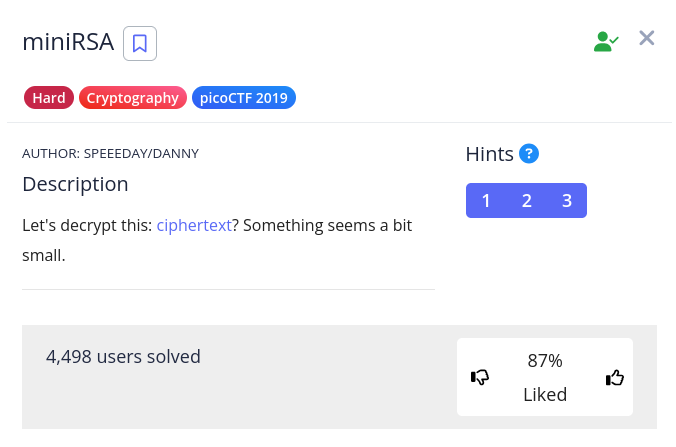Problem

Solution
Here we have some ciphertext encrypted using (presumably) textbook RSA. It is implied that a low public exponent e was used, which we can exploit to recover the flag. The solution is quite simple, but I’ll first provide some background that will help makes sense of it.
Background
Note
See rsa for a primer
1. Low Public Exponent
For small , the plaintext is trivially recovered by computing the th root of like as .
Link to original
Computing such a value requires high-precision arithmetic since is a massive integer. The Python module gmpy2 is great for such circumstances, providing the iroot function for computing the th root of an integer without truncation or rounding.
Script
from gmpy2 import iroot
with open("ciphertext", "r") as f:
space1, n, e, space2, c = f.readlines()
n = int(n[3:])
e = int(e[3:])
c = int(c[16:])
m, is_exact = iroot(c, e)
if is_exact and pow(m, e, n) == c:
print(m.to_bytes(256, "big").decode("utf-8").strip("\x00").strip())